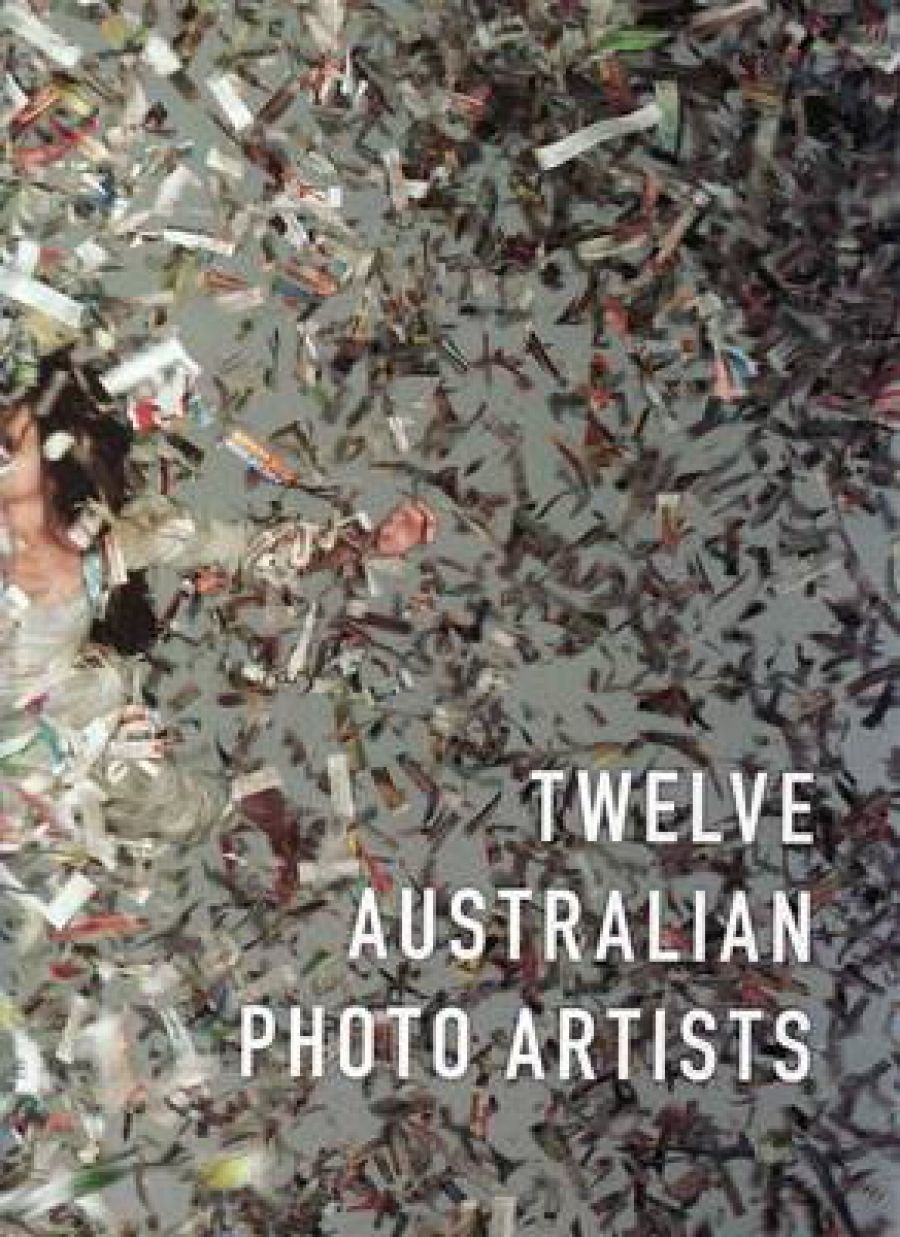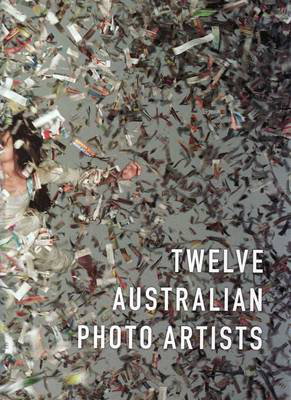
- Free Article: No
- Contents Category: Photography
- Review Article: Yes
- Article Title: Art versus document
- Online Only: No
- Custom Highlight Text:
Of all art forms, photography has probably had the most contentious and complex reception. Graduating from the ‘bastard child left on the doorstep of art’ in the 1840s to the darling of the art world for some 170 years, the critical understanding of this quintessentially modern medium is in a constant state of flux.
These thoughts occurred to me as I read this lavishly produced hardcover book. Indeed, as the rather prosaic title, states, this is photography that self-confidently declares itself as art. Blair French, who co-authored Twelve Australian Photo Artists with Daniel Palmer, brings one of the touchiest aspects of the medium to the fore when commenting on the work of Pat Brassington: ‘the relationship between photography and the world may appear transparent, but photography is in fact an opaque medium with its own material qualities ... it is an act of fabrication and construction.’ This is the sticking point that still brings the medium into contention: photography as a reflection of the world or as a construction. Or, to use a more crude conjunction, document verses art.
- Book 1 Title: Twelve Australian Photo Artists
- Book 1 Biblio: Piper Press, $99 hb, 200 pp
- Book 1 Cover Small (400 x 600):

- Book 1 Cover (800 x 1200):

It is undeniable that photography has traditionally gained its distinctive power through a connection to reality, however manipulated or interpreted that may be. Recently, I noticed with interest how many visitors to the National Gallery of Victoria’s Andreas Gursky exhibition were absorbed by the question: is this real or manipulated? Looking at the twelve portfolios in this book, it would seem that this particular battle had been won, but anyone with an eye to criticism will have noted the backlash against digital or overtly manipulated imagery that pops up in the press.
Regardless of such considerations, there is much to be proud of in contemporary Australian photography, and Twelve Australian Photo Artists provides an intelligent synopsis of some key practitioners. From the surreal psychological images of Pat Brassington to Tracey Moffatt’s larger-than-life scenarios to Bill Henson’s erotic dreamscapes, the book charts a dozen important players in the field.
Despite a whirlwind of creative activity among Australian photographers and many small publications, substantial books such as this are few. It is a cause for celebration that Piper Press has backed its publication. The authors conceived the book as an educational tool, and it succeeds in this aim. With succinct if rather flat introductions to each artist, plenty of further reading citations and beautifully reproduced large-scale images, this is a reference that will be of considerable use to a student audience and to those generally interested in the medium.
Although this is, as the authors note, not an overarching survey of contemporary Australian photography, it is hard not to see their selection of artists as a way of considering the diversity of practice that is so notable in this country. With a short introduction that skits across conceptual trends and dominant visual approaches, the authors have, by and large, left it up to the reader to draw conclusions about the ‘state of play’ in contemporary photography.
The advantage of looking at a small number of artists in detail is that it allows the reader to see developments in their art practice and then extrapolate outwards to the scene in general. Such an approach does, however, mean that the selection of artists is critical. It is tempting to remark on some notable artists who were omitted. I certainly think, for instance, that it would have been desirable to include more documentary photographers in this survey.
One of my favourite quotes in photography is from O.G. Rejlander, who wrote in feisty terms of those who disapproved of his photographic manipulations in the 1850s: ‘We photographers have a good ground of complaint against you art critics for the sneering overbearing manner in which you assign limits to our powers.’ The same cannot be said for the authors and publishers of this book, who have embraced the wide-ranging creativity that makes contemporary photography such an important part of art practice in this country. This book may not present the definitive word on Australian photography, but it does make a significant contribution to our understanding of this most intriguing art form.


Comments powered by CComment